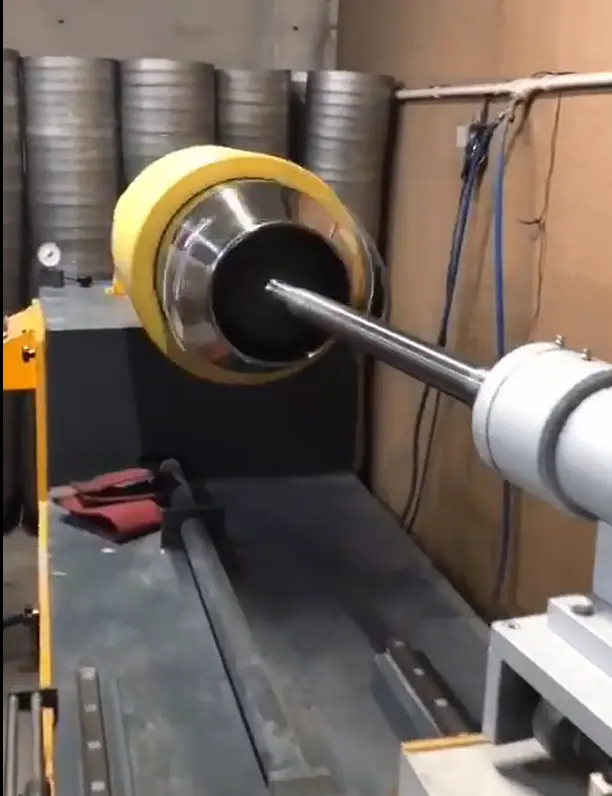
We manufacture Sheet Metal Grinding Machine to round the sheet metal edges. These machines are used in metalworking industries
A sheet metal grinding machine is a machine used to remove material from a metal surface to create a smooth and even finish. It is typically used to prepare metal surfaces for welding, painting, or other finishing processes.
The main components of a sheet metal grinding machine include a grinding wheel, a motor, and a control system. The grinding wheel is mounted on a spindle and rotates at high speed to remove material from the metal surface. The motor provides the power to rotate the grinding wheel. The control system allows the operator to adjust the speed and direction of the grinding wheel to achieve the desired finish.
Sheet metal grinding machines can be used on a wide range of metals, including steel, aluminum, brass, and copper. They are commonly used in industries such as metal fabrication, aerospace, automotive, and construction.
There are several types of sheet metal grinding machines available, including belt grinders, disc grinders, and surface grinders. Belt grinders use a sanding belt to remove material from the metal surface, while disc grinders use a grinding disc. Surface grinders use a rotating grinding wheel to create a flat surface on the metal.
Overall, sheet metal grinding machines are essential tools for metalworking and can be used to create smooth, even surfaces on a variety of metal parts and components.
Sheet Metal Grinding Machine
A sheet metal grinding machine is a specialized tool used to remove burrs, sharpen edges, and create a smooth surface on sheet metal components. These machines are commonly used in metalworking applications to prepare sheet metal for further processing or to enhance the aesthetics of the final product.
Types of Sheet Metal Grinding Machines:
- Disk Grinders: Disk grinders are versatile tools that utilize rotating abrasive discs to grind down edges, remove imperfections, and create a smooth finish on sheet metal components. They are suitable for a wide range of materials, including steel, aluminum, and stainless steel.
- Angle Grinders: Angle grinders are powerful tools that utilize rotating abrasive discs to grind down metal, remove burrs, and create a rough surface for welding or attachment. They are particularly useful for heavy-duty grinding applications.
- Bench Grinders: Bench grinders are stationary grinding machines that provide a stable platform for grinding sheet metal components. They are often used for fine-tuning edges, sharpening corners, and creating precise shapes.
- Surface Grinders: Surface grinders are high-precision tools that utilize rotating abrasive belts or discs to achieve a very smooth surface finish on sheet metal components. They are used in applications where surface finish is critical, such as aerospace and automotive manufacturing.
- Ultrasonic Grinders: Ultrasonic grinders utilize high-frequency vibrations to remove burrs and imperfections from delicate or precision sheet metal components. This non-abrasive method is gentle and does not damage sensitive surfaces.
Factors to Consider When Choosing a Sheet Metal Grinding Machine:
- Material of the Sheet Metal: The material of the sheet metal component will determine the type of abrasive material and the grinding method suitable for the application.
- Thickness of the Sheet Metal: The thickness of the sheet metal component will influence the type of grinding machine and the abrasive grit required for effective grinding.
- Desired Level of Precision: The required level of precision will dictate the type of grinding machine and the abrasive grit needed to achieve the desired surface finish.
- Production Volume: For high-volume production, a stationary grinding machine may be more efficient and consistent.
- Cost Considerations: The cost of different grinding machines and abrasive materials should be evaluated based on the production volume and desired precision.
Applications of Sheet Metal Grinding Machines:
- Automotive Manufacturing: Grinding sheet metal components for car bodies, engine parts, and other automotive components.
- Aerospace Manufacturing: Grinding precision sheet metal components for aircraft and spacecraft.
- Metalworking Shops: Grinding sheet metal components for a variety of applications, such as machinery parts, construction components, and consumer goods.
- Fabricating and Repair: Grinding burrs, sharpening edges, and creating smooth surfaces on sheet metal components for various fabrication and repair projects.
- Maintenance and Finishing: Grinding rough edges, removing weld spatter, and enhancing the surface finish of sheet metal components in maintenance and finishing operations.
Sheet metal grinding machines are essential tools for metalworking applications, providing a versatile and efficient method for removing burrs, sharpening edges, and creating a smooth surface on sheet metal components. By choosing the appropriate grinding machine and abrasive materials, manufacturers can achieve the desired surface finish and ensure the quality of their sheet metal products.
Sheet metal grinding machines come in various sizes and configurations, ranging from small handheld tools to large industrial machines. They can be operated manually or with computer numerical control (CNC) technology for precision grinding.
Some sheet metal grinding machines also come with coolant systems, which help to cool the grinding wheel and prevent overheating of the metal being worked on. This can increase the efficiency and lifespan of the grinding wheel, as well as improve the quality of the finished surface.
When using a sheet metal grinding machine, it is important to wear appropriate personal protective equipment (PPE), such as safety glasses and gloves, to protect against flying debris and sharp edges. It is also important to follow proper safety procedures, such as securing the metal being worked on and keeping hands and fingers away from the grinding wheel.
Overall, sheet metal grinding machines are versatile tools that can be used for a variety of metalworking applications, from preparing surfaces for finishing to removing excess material and shaping metal parts.
Industries
Sheet metal grinding machines are used in a variety of industries that work with sheet metal, such as automotive, aerospace, construction, and manufacturing. They are often used to prepare metal surfaces for further processing, such as welding, painting, or coating. Sheet metal grinding machines can also be used to remove imperfections and smooth out rough edges on metal parts, as well as to shape and polish metal surfaces to achieve a specific finish or texture. They are essential tools for metalworkers and fabricators who work with sheet metal on a regular basis.
Parts
The specific parts of a sheet metal grinding machine can vary depending on the model and manufacturer, but some common components include:
- Grinding wheel: The abrasive disc or wheel that rotates and grinds the metal surface.
- Motor: The electric motor that powers the grinding wheel.
- Worktable: The flat surface on which the metal piece is placed during grinding.
- Spark guard: A protective shield that covers the grinding wheel to prevent sparks and debris from flying out.
- Coolant system: A system that pumps coolant or lubricant onto the grinding wheel and metal surface to prevent overheating and reduce friction.
- Belt or disc sander: Some sheet metal grinding machines have a belt or disc sander attachment for sanding and finishing metal surfaces.
- Dust collector: A system that collects dust and debris generated during grinding, protecting the operator and keeping the workspace clean.
- Control panel: The user interface for operating and adjusting the grinding machine.
These are some of the common parts found in sheet metal grinding machines, but the specific components may vary depending on the size and type of machine.
Sheet Metal Grinding Machine
A sheet metal grinding machine, also known as a sheet metal deburring machine, is a specialized tool used in metalworking and fabrication processes to remove burrs, sharp edges, and imperfections from sheet metal surfaces. These machines are essential for ensuring the quality and safety of sheet metal components used in various industries, including automotive, aerospace, electronics, and construction. Here are the key features and functions of a sheet metal grinding machine:
Key Features and Functions:
- Deburring: The primary purpose of a sheet metal grinding machine is to deburr sheet metal parts. Deburring involves removing burrs, which are small, unwanted protrusions, sharp edges, or rough spots that can occur during the sheet metal cutting, punching, or bending processes.
- Edge Rounding: These machines can also round or chamfer the edges of sheet metal components. Rounded edges improve safety by reducing the risk of cuts and injuries during handling.
- Surface Finishing: Sheet metal grinding machines can achieve different levels of surface finish, from coarse to fine, depending on the specific requirements of the application. They can create smooth and uniform surfaces on sheet metal parts.
- Consistency: These machines ensure consistency in the finish quality across multiple sheet metal parts, reducing variability in the manufacturing process.
- Automation: Some advanced sheet metal grinding machines are automated, allowing for precise and repeatable deburring and edge rounding operations. Automation improves efficiency and reduces labor costs.
- Customization: Many machines offer flexibility in terms of abrasive belts, brushes, and tooling, allowing users to tailor the machine’s operation to the specific needs of their sheet metal components.
- Material Handling: Some machines include material handling systems, such as conveyors or feeders, to automatically move sheet metal parts through the grinding process, further enhancing efficiency.
Types of Sheet Metal Grinding Machines:
- Wide Belt Grinding Machine: These machines use a wide abrasive belt to grind and finish large sheet metal surfaces. They are ideal for removing surface imperfections and achieving uniform surface finishes.
- Deburring and Edge Rounding Machine: Specialized machines are designed primarily for deburring and rounding the edges of sheet metal parts. They often use brushes or abrasive belts to perform these operations.
- Timesaver Machine: Timesaver machines are a brand of wide belt grinding machines known for their speed and efficiency in finishing large sheet metal parts.
- Dry and Wet Grinding Machines: Some sheet metal grinding machines use dry abrasive belts or discs, while others use a wet grinding process, which can be advantageous for reducing heat and preventing dust.
- Robotic Grinding Cells: In some automated manufacturing environments, robotic cells equipped with grinding tools are used to deburr and finish sheet metal parts. These cells offer high flexibility and precision.
Sheet metal grinding machines are essential for achieving the desired surface quality and safety standards in various industries. The choice of machine depends on the specific application, sheet metal thickness, required finish, and production volume. Proper deburring and finishing are critical for the overall quality and functionality of sheet metal components.
Deburring Tool for Metal
https://www.youtube.com/embed/mMRmnQuYgjE?feature=oembedDeburring Tool for Metal
Deburring tools are essential for removing burrs, sharp edges, and imperfections from metal components. These tools are crucial for maintaining the safety, functionality, and aesthetics of metal products across various industries.
Types of Deburring Tools for Metal:
- Hand-Held Deburring Tools: These tools provide portability and convenient deburring for smaller metal parts or in situations where access is limited. Common hand-held deburring tools include:
- Files: Files with varying coarseness levels are effective for removing burrs and smoothing out rough edges on metal.
- Deburring Knives: Knives with rounded blades are specifically designed to trim and remove burrs from metal edges.
- Deburring Wheels: Deburring wheels with abrasive grit are effective for deburring metal edges.
- Power Deburring Tools: These tools offer greater efficiency and power for deburring larger metal components or in high-volume production. Examples include:
- Rotary Deburring Tools: Utilize rotating abrasive discs or belts to quickly remove burrs from metal parts.
- Sanders: Sanders with appropriate abrasive belts can be used for deburring and surface finishing of metal components.
- Stationary Deburring Machines: For high-precision deburring or deburring complex shapes, specialized stationary machines offer consistent and precise results. These machines may utilize rotating cutters, abrasive belts, or a combination of both.
- Ultrasonic Deburring Systems: For precision deburring of delicate metal parts or complex geometries, ultrasonic deburring offers a gentle and effective method.
Choosing the Right Deburring Tool for Metal
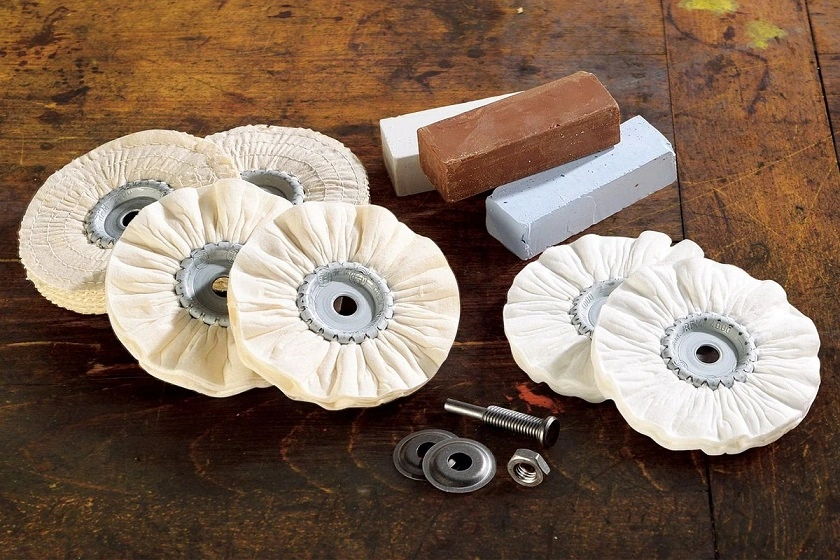
The choice of deburring tool for metal depends on several factors, including:
- Size and shape of the metal part: The tool should be able to accommodate the size and shape of the part comfortably.
- Material of the metal part: The abrasive material used in the tool should be compatible with the material of the part.
- Desired level of precision: The tool should be able to achieve the desired level of precision for the application.
- Production volume: If high-volume production is required, a stationary machine may be more efficient.
- Safety features: The tool should incorporate adequate safety features to protect the operator from potential hazards.
Benefits of Using Deburring Tools for Metal:
- Improved safety: Deburring tools can reduce the risk of injuries to operators by removing sharp edges and burrs.
- Improved functionality: Rounded edges can prevent snagging and protect other components from damage.
- Enhanced aesthetics: A smooth, burr-free surface improves the overall appearance of metal products.
- Increased efficiency: Power deburring tools and stationary machines can significantly reduce deburring time.
Applications of Deburring Tools for Metal:
- Automotive industry: Deburring car bodies, engine components, and other automotive parts.
- Aerospace manufacturing: Deburring precision metal components for aircraft and spacecraft.
- Construction: Deburring metal components for buildings, bridges, and other structures.
- Electronics manufacturing: Deburring metal components for circuit boards, electronic devices, and other electronics.
- Consumer goods manufacturing: Deburring metal components for appliances, furniture, and other consumer products.
Deburring tools play an essential role in maintaining the quality and safety of metal components across various industries. By effectively removing burrs and imperfections, deburring enhances the functionality, aesthetics, and overall value of metal products.
Metal deburring, grinding, and rounding are common applications in metalworking processes aimed at smoothing rough edges, removing burrs, and achieving a uniform finish on metal parts. Here’s a brief overview of each:
- Deburring: This process involves removing sharp edges or burrs left on metal parts after machining, cutting, or forming operations. It improves safety, functionality, and aesthetics of the parts.
- Grinding: Grinding is used to achieve precise dimensional control and surface finish. It involves using abrasive wheels or belts to remove material from a workpiece, often to prepare surfaces for further finishing or to achieve specific tolerances.
- Rounding: Rounding, also known as edge rounding, is done to soften sharp edges or corners on metal parts. It improves part handling, reduces the risk of injury, and can be aesthetically pleasing.
These processes are essential in various industries such as automotive, aerospace, manufacturing, and precision engineering, where metal parts must meet high standards of quality, safety, and performance.
- Deburring:
- Purpose: Deburring removes burrs, which are unwanted rough edges or protrusions on metal parts that result from machining, cutting, or forming processes.
- Methods: Deburring can be achieved through various methods such as manual deburring tools, abrasive stones, brushes, tumbling machines (vibratory or centrifugal), or chemical deburring solutions.
- Importance: Removing burrs improves the functional and aesthetic quality of metal parts. It also enhances safety by eliminating sharp edges that could cause injuries during handling or assembly.
- Grinding:
- Purpose: Grinding is used to achieve precise dimensional control, improve surface finish, and remove excess material from metal parts.
- Types: There are several types of grinding processes, including surface grinding, cylindrical grinding, centerless grinding, and internal grinding, each suited for specific part geometries and surface requirements.
- Equipment: Grinding machines use abrasive wheels (grinding wheels or belts) that rotate at high speeds to grind away material from the workpiece.
- Applications: Grinding is crucial for preparing surfaces for further finishing operations (such as polishing or plating), achieving tight tolerances, or removing defects like surface imperfections or weld seams.
- Rounding (Edge Rounding):
- Purpose: Rounding, or edge rounding, involves smoothing sharp edges or corners on metal parts.
- Methods: This can be done through mechanical methods like deburring tools with radius edges, vibratory or centrifugal tumbling processes with rounded media, or automated edge rounding machines.
- Benefits: Rounding improves part handling safety by reducing the risk of cuts or scratches. It also enhances the part’s appearance and can be critical for components that interact with other parts or personnel during assembly or use.
These processes are fundamental in metalworking industries where precision, quality, and safety are paramount. They ensure that metal parts meet exacting standards for functionality, durability, and aesthetics demanded by various applications, from automotive and aerospace to electronics and consumer goods manufacturing.
Deburring
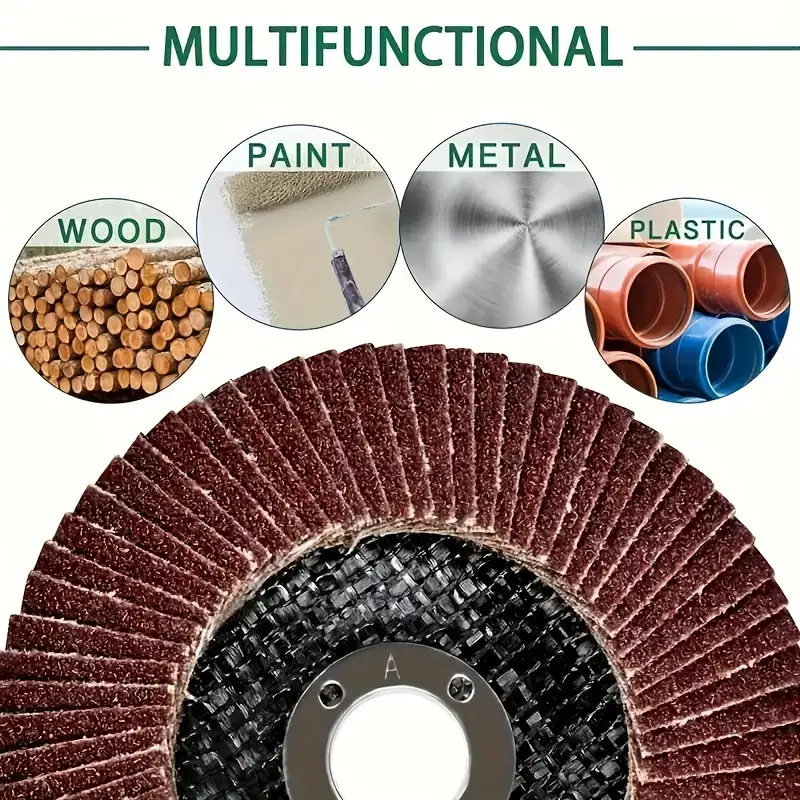
Deburring is a critical process in metalworking that involves the removal of burrs, which are unwanted rough edges or protrusions on metal parts. These burrs typically occur as a result of machining, cutting, or forming operations such as drilling, milling, stamping, or punching.
Importance of Deburring:
- Safety: Removing burrs eliminates sharp edges that can cause injuries during handling or assembly of parts.
- Functionality: Deburring ensures that parts fit together properly without interference from protrusions or rough edges.
- Aesthetics: Smooth edges improve the appearance of parts and enhance overall product quality.
- Performance: Burrs can affect the performance of moving parts or components that require precise tolerances.
Methods of Deburring:
- Manual Deburring Tools: Hand tools such as files, deburring knives, scrapers, or abrasive pads are used to manually remove burrs from small or intricate parts.
- Abrasive Stones and Brushes: Rotary tools equipped with abrasive stones or brushes can be used to remove burrs from larger or more accessible surfaces.
- Tumbling Machines: Vibratory or centrifugal tumbling machines use abrasive media (such as ceramic or plastic pellets) to deburr multiple parts simultaneously. This method is effective for small to medium-sized parts with complex geometries.
- Chemical Deburring: Chemical solutions or processes can be employed to selectively dissolve burrs, particularly in internal passages or complex shapes where mechanical methods may be challenging.
Deburring Considerations:
- Material Type: Different metals (e.g., aluminum, steel, titanium) require specific deburring techniques due to variations in hardness and machinability.
- Part Geometry: Deburring methods are chosen based on the size, shape, and accessibility of the burrs and the part itself.
- Quality Control: Inspecting parts after deburring ensures that all burrs are removed and that the part meets required specifications.
Deburring is essential in industries such as aerospace, automotive, electronics, and precision engineering, where high-quality, safe, and functional metal components are crucial.
Grinding
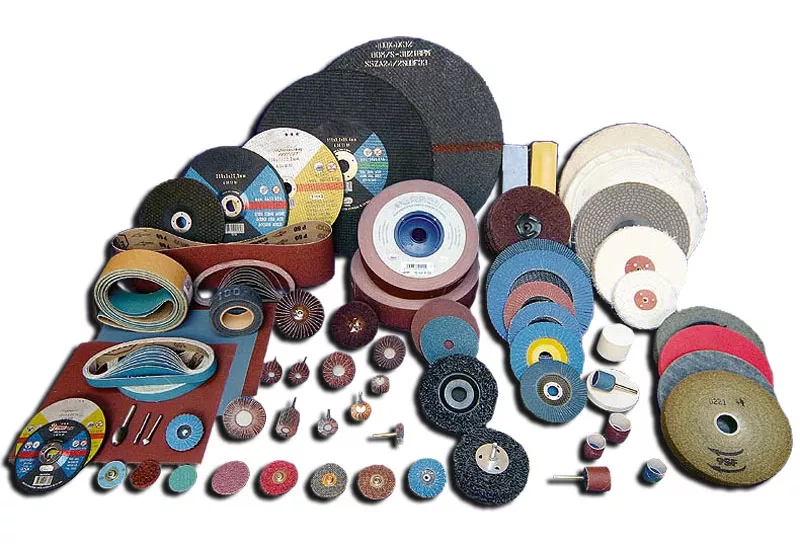
Grinding is a machining process used to remove material from a workpiece to achieve desired dimensions and surface finish. It is a versatile process widely used in various industries for both roughing and finishing operations on metal and other materials.
Purpose of Grinding
- Dimensional Control: Grinding allows for precise control over the dimensions of a workpiece, achieving tight tolerances that are difficult to achieve through other machining processes.
- Surface Finish: By using abrasive grains bonded into wheels or belts, grinding can produce smooth surfaces with low roughness values, enhancing the appearance and functionality of the parts.
- Material Removal: Grinding efficiently removes excess material, such as weld beads, casting flash, or stock material from forgings or billets, preparing the workpiece for subsequent operations.
Types of Grinding Processes:
- Surface Grinding: Involves grinding flat surfaces to achieve a smooth finish. It is commonly used for finishing hardened steel, cast iron, and similar materials.
- Cylindrical Grinding: Used to grind the outside diameter of cylindrical workpieces. It is ideal for creating precise roundness and surface finishes on shafts, rods, and other cylindrical components.
- Centerless Grinding: A type of cylindrical grinding where the workpiece is supported between two wheels: the grinding wheel and a regulating wheel. It is used for high-volume production of cylindrical parts with consistent dimensional accuracy.
- Internal Grinding: Grinding the inside diameter of a workpiece. It is used to create precise bores or holes with a smooth surface finish.
Equipment and Tools:
- Grinding Machines: Include surface grinders, cylindrical grinders, centerless grinders, and internal grinders, each designed for specific grinding applications.
- Grinding Wheels: Made from abrasive grains bonded together in various shapes and sizes. Types include aluminum oxide, silicon carbide, and diamond, each suited to different materials and applications.
Applications of Grinding:
- Manufacturing: Grinding is essential in the production of precision components for automotive, aerospace, medical devices, and consumer electronics.
- Tool and Die Making: Used for sharpening cutting tools and dies to maintain sharp edges and precise dimensions.
- Repair and Maintenance: Grinding is also employed for repairing worn or damaged parts by restoring their original dimensions and surface finish.
Grinding is a fundamental machining process that plays a crucial role in achieving the required dimensional accuracy, surface quality, and overall performance of metal parts in modern manufacturing.
Rounding
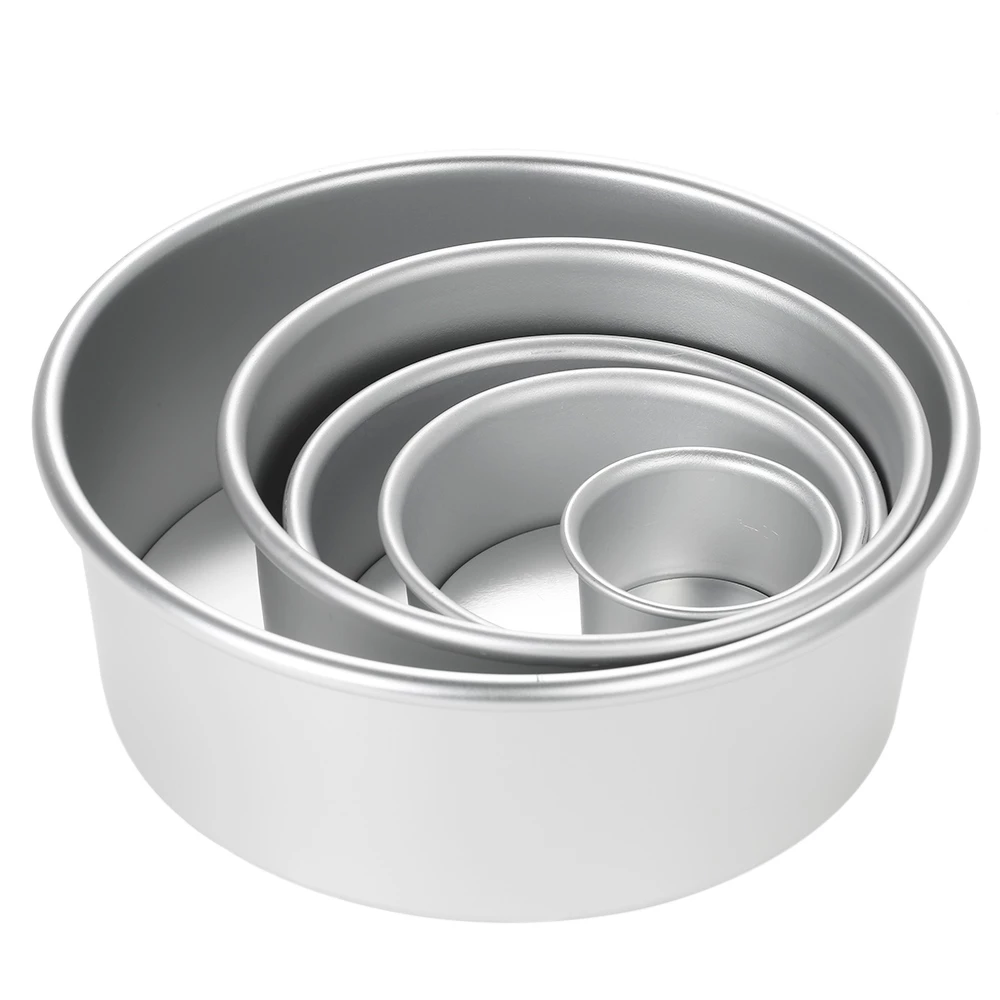
Rounding, also known as edge rounding or radiusing, is a finishing process used to smooth sharp edges and corners on metal parts. This process is essential for improving safety, enhancing aesthetics, and ensuring proper functionality of the parts, especially in applications where handling and contact with personnel or other components are involved.
Purpose and Benefits of Rounding:
- Safety: Rounded edges reduce the risk of injuries during handling, assembly, or use by eliminating sharp points or edges that could cause cuts or abrasions.
- Aesthetics: Smooth, rounded edges enhance the appearance of metal parts, making them more visually appealing and professional in finished products.
- Functionality: Rounding can improve the performance of parts by reducing stress concentrations at corners, which can extend the service life of components subjected to cyclic loading or wear.
Methods of Rounding:
- Manual Methods: Hand tools such as files, deburring tools with radiused edges, or abrasive pads can be used for small-scale rounding operations on accessible edges and corners.
- Machine Rounding: Automated edge rounding machines or dedicated deburring machines equipped with specialized tools can efficiently round edges and corners of larger or complex-shaped parts.
- Tumbling Processes: Vibratory or centrifugal tumbling machines using abrasive media (e.g., ceramic or plastic pellets) can uniformly round edges of multiple parts simultaneously. This method is effective for small to medium-sized parts with consistent edge profiles.
Considerations for Rounding:
- Part Geometry: The shape and size of the part influence the choice of rounding method. Complex geometries may require specialized equipment or multiple processes to achieve uniform rounding.
- Material Compatibility: Different metals (e.g., aluminum, stainless steel, titanium) and alloys have varying hardness and machinability characteristics, which may affect the choice of rounding tools and methods.
- Surface Finish Requirements: Rounding should maintain or improve the overall surface finish of the part, ensuring it meets functional and aesthetic specifications.
Applications of Rounding:
- Consumer Products: Rounding is crucial in industries such as furniture manufacturing, where rounded edges on metal components improve safety and user comfort.
- Automotive and Aerospace: Parts like brackets, panels, and housings benefit from rounded edges to prevent injuries during assembly and maintenance operations.
- Medical Devices: Ensuring smooth, rounded edges on surgical instruments and equipment enhances patient safety and ease of handling.
Rounding plays a vital role in enhancing the usability, safety, and appearance of metal parts across various industries, contributing to overall product quality and customer satisfaction.
